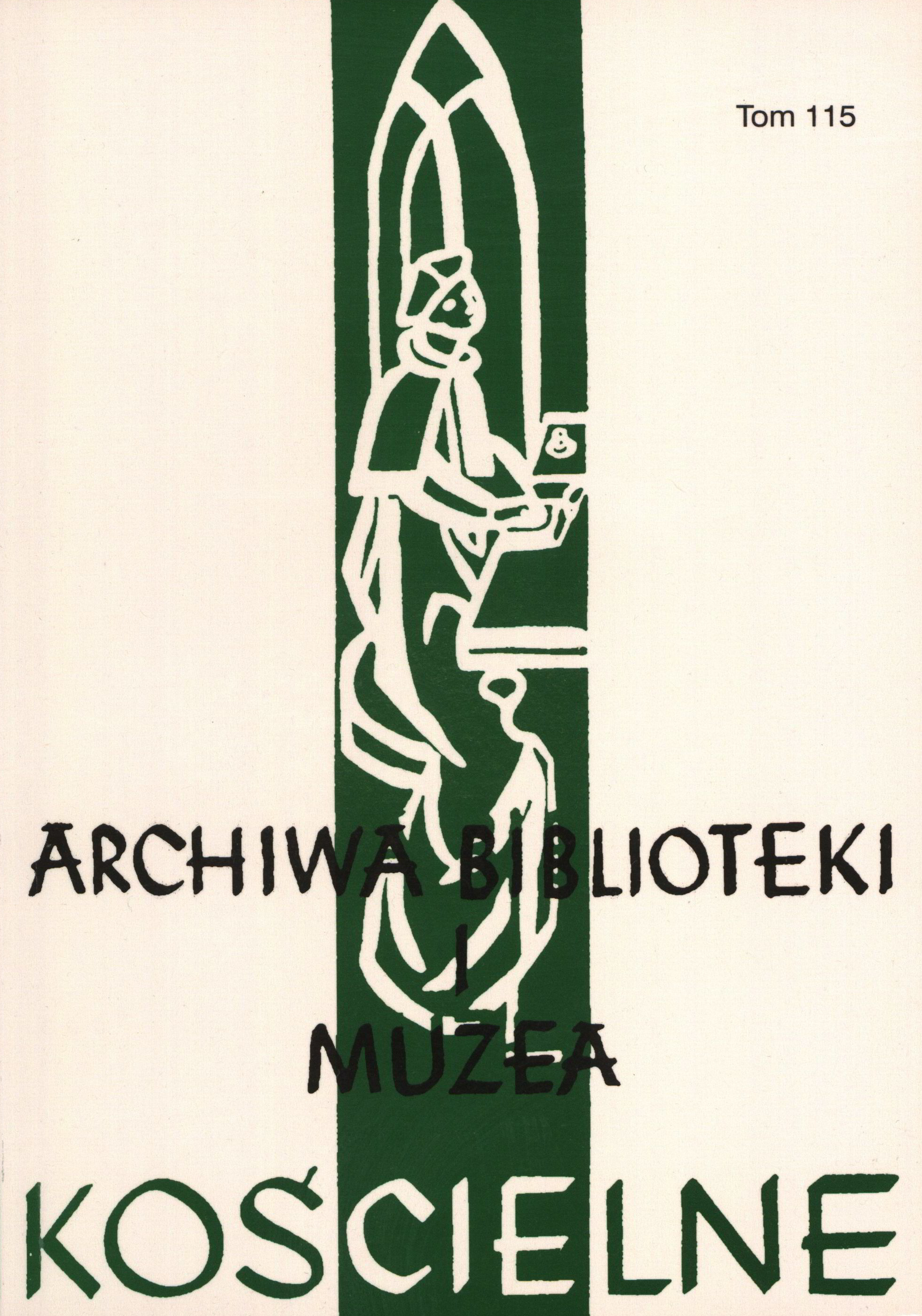Dokumenty i dyplomy klasztoru klarysek w Gnieźnie. Sposoby uwierzytelniania dokumentów w praktyce kancelaryjnej konwentu św. Klary. Inwentarz
Documents and diplomas of the Poor Clares convent in Gniezno. Methods of authenticating documents in the practice of the convent of St. Clare. Inventory
Author(s): Olga Miriam PrzybyłowiczSubject(s): History
Published by: Katolicki Uniwersytet Lubelski Jana Pawła II - Wydział Teologii
Keywords: Poor Clares; Gniezno; parchments; diplomas; documentation; archives, inventory
Summary/Abstract: The aim of this article is to present and analyse the original files and parchment diplomas of the Poor Clares of Gniezno as regards office practice, including the methods of authenticating documents in the monastery and the degree of literacy of the nuns themselves. The documents are held by the Archdiocese Archives in Gniezno. The material and topical division of archives was also presented. The query covered parchment diplomas from the Gniezno Diplomas collection and documents from loose files kept in the AKM – A Cap section. The loose files - are over 2,500 units and over 4,000 cards. 161 originals were selected, including three parchment diplomas. All of them are included in the Appendix. Documents were authenticated by signatures and/or stamping a seal by paper or on paper. Two types have survived – one with a pointed-oval shape, indicating the medieval provenance of the seal, which has analogies to the well-known stamps of other female monasteries, e.g. Poor Clares in Skala and Cracow. The second type is a round stamp that began to appear on documents from the second decade of the 18th century. The dominant language is Polish, moreover, there are individual files written in Latin – mainly letters to clergy, but also to laypeople. Eight material categories were distinguished: contracts – the largest part of the collection – 77, settlements – 25, postings – 16, letters – 11, confirmations – 8, certificates – 7, permits – 7, others – 10. They were authenticated by 31 abbesses. In the 17th century, two superiors prepared individual files themselves, because we are dealing with the identification of hands thanks to their signatures. On the other hand, there are seven such cases in the next century, and one in the 19th century. In addition, two documents were prepared by a sister who served as a secretary in the first half of the 18th century, and one by a regular nun in 1762. It should be assumed that the remaining documents came from the hand of public writers, prosecutors of the monastery of the Poor Clares or Franciscans from the nearby Gniezno convent, with which the sisters maintained – as is clear from the records of monastics and provinces – good relations.
Journal: Archiwa, Biblioteki i Muzea Kościelne
- Issue Year: 2021
- Issue No: 115
- Page Range: 359-418
- Page Count: 59
- Language: Polish

